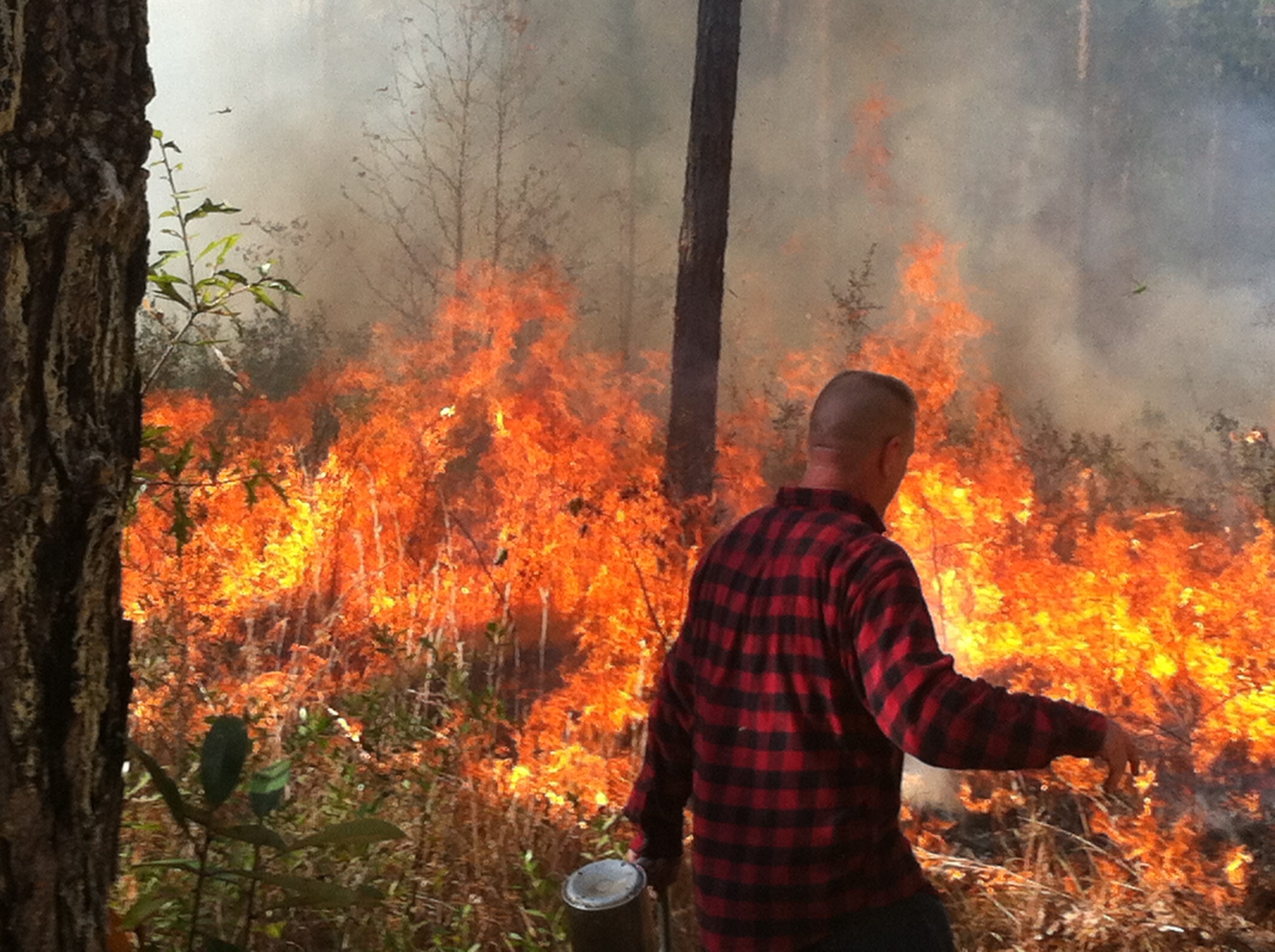A beautiful day for a (prescribed) burn!
Published 1:44 pm Sunday, March 6, 2022
By Patricia Drackett
Director of the Crosby Arboretum and
assistant extension professor of landscape architecture with the Mississippi State University Extension Service.
On Monday, a prescribed fire was conducted in the Crosby Arboretum’s south pitcher plant bog. We’d started to become a bit concerned, as the window for the best time to burn the bog was drawing to a close, meaning, the bloom buds on the pitcher plants were about to unfold. Thankfully, the weather conditions this week allowed us to move forward with “getting some fire on the ground.” Afterward, the burn team reported that everything had gone exceedingly well.
My role was easy – capturing a few photos of the beaming crew, having arrived at the exact moment to see them applying the final touches of fire on the bog’s northeast corner. The bog’s burn team consisted of Extension forester Butch Bailey, recently retired building and grounds manager Terry Johnson, and his new replacement, Forrest Blass. Terry is joining us for a day each week this spring to orient Forrest on the tasks involved in caretaking the Arboretum, passing on his institutional knowledge.
The native plant communities found in coastal savannas benefit from burning, and The Crosby Arboretum has incorporated prescribed fire as a management tool for exhibit maintenance. Our Savanna Exhibit comprises one-third of our 64-acre interpretive site and displays plant species that are adapted to such periodic fire. Applying regular controlled fire in our savannas prevents the growth of small trees and maintains the herbaceous plants – the grasses and perennials – and allows visitors to our public garden the chance to see an example of how coastal landscapes would have appeared prior to European settlement.
Prescribed fire also affects the abundance and distribution of pine savanna birdlife, and the burning of our south bog encourages the presence of bird species such as the Henslow’s Sparrow. With populations in decline over the past 30 years, Henslow’s Sparrow has been identified as a species of conservation concern. According to the U.S. Fish and Wildlife Service, this species is found in areas burned less than a year and becomes less common on sites burned over a year and a half ago.
One of the most amazing things about the prescribed burns is observing how quickly the grasslands recover from fire events. The plants reap the benefit from the nutrients present in the ash, and it doesn’t take long for the blackened areas to turn green again. Also, the ghostly curls of grasses charred by the fire provide some very interesting “photo ops”.
This regeneration is a delightful process to observe. Soon after a burn, one can begin to pick out the ruby-jeweled rosettes of tiny sundew plants. In early spring, the delicate yellow blooms of the pitcher plants unfurl, and for weeks will hang suspended over the immature herbaceous layer.
Standing on the South Bog boardwalk in summer amongst the steady hum of insect life and gazing on the robust growth of the perennials and grasses, it is not easy task to convince a tour group that a little more than half a year ago the area they are standing in was flat and blackened.
For publications and more information on prescribed fire, visit the Mississippi State University Extension Service website at http://extension.msstate.edu/, and enter the keywords “prescribed fire”. Here, you can view or download publications on prescribed fire, for example Publication 2262, “When Will a Prescribed Burn Help my Fire Stand?”, Publication 2283, “Prescribed Burning in Southern Pine Forests”, and Publication 2470, “Managing the Family Forest in Mississippi”.
Two new Forest Therapy walks are now open, Sunday, March 20 from 10:00 a.m. to 1:00 p.m., and Saturday, April 16, from 12:30 to 3:30 led by Nadine Phillips, certified Forest Therapy Guide in training with the International Nature and Forest Therapy Alliance. Members $10; non-members $15. Call 601-799-2311 to sign up for this program.
Attend a presentation on the Ecological and Cultural Value of Native Plants on Saturday, March 12 from 1:00 to 2:00 p.m. by Matthew Herron, Founder and Education Director of the Coastal Plains Outdoor School in Lumberton, Mississippi. Native plants have sustained people on the southern landscape for thousands of years and sustained native ecologies for millions. Matthew will discuss the incredible ecological and cultural value of native plants as food, medicine, pigments, fibers and more. Program will be held outdoors. Reservations required. Members $2; non-members $6.
Our big spring native plant sale is almost here! Join us Friday and Saturday, March 25 and 26. More information is available on our website at http://crosbyarboretum.msstate.edu/ and our Facebook page. You may also sign up on our webpage under “Event Updates” to receive regular announcements on programs and activities. The Crosby Arboretum is located at 370 Ridge Road in Picayune, at I-59 Exit 4. Leashed pets are always welcome!








